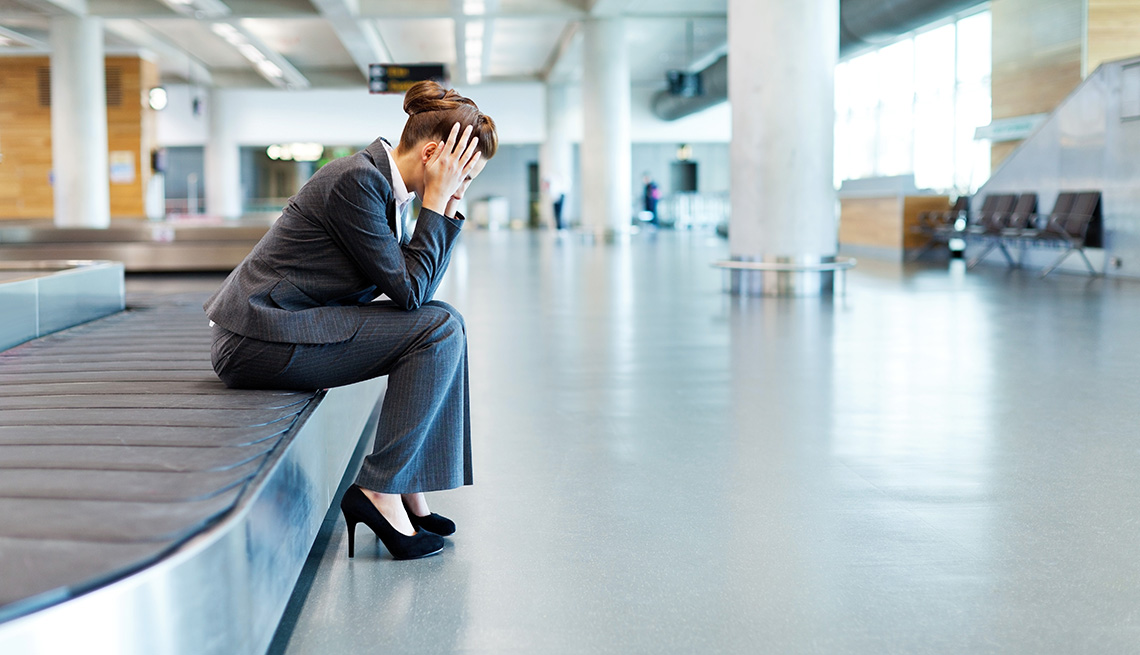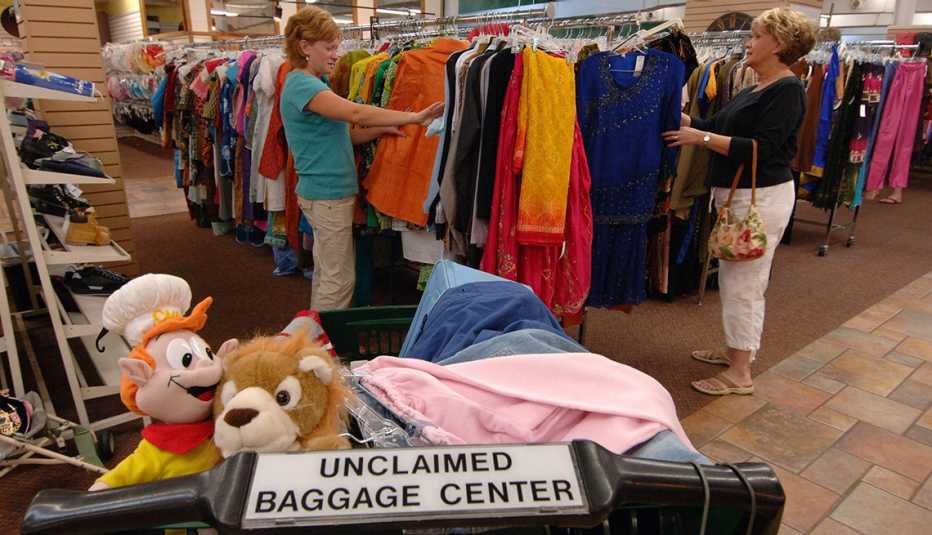AARP Hearing Center
Thanks to new airline tracking technology and regulations, lost luggage is almost a thing of the past. Last year, there were just 2.4 mishandled bags for every 1,000 passengers in North America — a drop of almost 70 percent in 10 years, according to an industry report. Still, when it's your luggage that is damaged, delayed or lost, it's a hassle. Getting compensated for the loss, however, doesn’t have to be. Here’s what to know.
You arrive and your luggage is damaged
1. Report. Tell your airline’s baggage services agent before leaving the airport about the damage. According to the Department of Transportation, airlines must accept all reports of damage to wheels, straps, zippers, handles and other protruding parts of your luggage. (Normal wear and tear, such as scuffs and dents, don’t count.) The agent will assess the damage and guide you through the claims process.
International note: Regulations allow you to report damage within seven days of your flight. If possible, you should still make a report before leaving the airport, because baggage personnel will need to inspect the luggage in order to provide compensation.
2. Repair or reimbursement. If your bag is eligible for repair, the airline may send it to a preapproved vendor to be fixed. Some may allow you to use a repair service of your choosing and reimburse you later. When making your report, be sure to ask the agent how the airline’s repair or reimbursement process works. For instance, if you use an outside repair service, you will need to provide receipts in order to be compensated. In other cases, the airline may offer you a lump sum instead of providing or paying for repair services. If so, you’ll be compensated for the bag’s “depreciated value,” meaning its value in today’s dollars.
Aviation journalist Benét Wilson says she returned from a convention in New Orleans last summer “and the handle on my checked rolling suitcase was broken clean off." She went to the Southwest Airlines desk and was given a flight voucher and $60 to go toward a new suitcase. Wilson adds that there are a few ways you minimize your chances of damaged luggage: Don’t overstuff, make sure that hard handles are retracted and use TSA-approved locks.
3. Damage caused by TSA inspections. Airlines are responsible for transporting luggage to and from the aircraft, but the Transportation Security Administration (TSA) may inspect luggage before it reaches the plane. If your luggage was damaged as part of a TSA inspection, the agency gives you up to two years to file a claim, which can take up to six months to process. How can you tell if the TSA is at fault? According to Wilson, telling the difference between airline and TSA damage can be tricky. First, she says, take a look to see if a TSA notice was placed inside your bag — that’s a sign it was inspected. Still not sure? Consider filing claims with both the TSA and your airline. The TSA requires that your claim includes evidence of agency negligence, but, according to the Department of Transportation, airlines are required to accept all reports of damage, even if they feel they are not liable.


































































